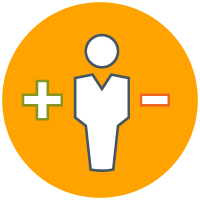“We’re in trouble.” It’s not the way you like to hear any phone call start. But unfortunately, these were the first words out of the mouth of a CHRO of a global retail company. He was distressed about a candidate for whom we’d done an executive leadership assessment a few months back.
His plight continued: “Remember a few months back, we had a conversation–the CEO, you, and me–about someone we were considering for an executive-level role? Based on his executive assessment data, you said he wasn’t a good fit for the role. Well, there were a lot of politics at play. And we hired him anyway.
“Now he’s showing up at big meetings with a narrow view, and he’s not seeing the big picture. He’s not anticipating the questions he should be asking, and he is demoralizing his team. It’s been only a few months, but several people on his team have left. I honestly wish we’d never hired him. But can we coach him?”
This company was certainly not the first to panic about having placed the wrong person in an executive position. Filling executive positions is a high-stakes proposition and the cost of failure is extremely high. Not only is there the direct cost of hiring the executive, but also the opportunity cost.
In this case, the executive was let go after several months. Worse, it took the company almost a full year to fill the role. So, essentially nothing productive happened in that year, costing the company serious lost time and money. That's why data is so important in making executive hiring, succession, and development decisions.
How to Use Executive Leadership Assessments to Make Better Decisions
Below I describe three types of executive leadership assessment approaches that can help you make effective decisions and lessen the risks associated with key talent strategy judgments. I also provide guidance on applications of each type of executive leadership assessment as well as when and why you would use them. (And when not to use them.)
Note that I’ll focus mostly on the assessments that measure executive leadership skills. However, we almost always pair any executive assessment with personality data for deeper insight on executive attributes and tendencies.

Approach #1: Executive Interview Assessments
In the scenario with the retail company above, the CHRO had an executive search firm to source candidates with the right experience. But they wanted to do more than a standard job interview. So they worked with us to conduct an executive interview assessment.
Executive interview assessments are conducted by a highly skilled and objective external assessor. Usually, they take place in a single session lasting a few hours. Candidates are given business scenarios to work through, based on real-world challenges the executive would face in that role at the hiring company.
The assessor then rates the candidate based on how they respond to the business scenario. They look at how they suggest solving problems, their planning and relationship skills, and how they work in high-pressure situations.
This method also integrates business impact questions to understand how they’ve addressed similar business challenges in the past. These behavioral examples are then integrated with data from reliable personality assessments to provide relevant insights to the hiring organization.
When to Use Executive Interview Assessments
Executive interview assessments are typically used when you need to move quickly, but need to add objectivity to the process. While interview assessments can be used with internal talent, they are particularly important for external candidates.
This type of executive assessment approach is often called “lack of failure mode analysis.” The main objective is to understand whether the individual will be a risky hire based on likely points of potential failure in the role.
I liken this process to an insurance policy. The data gives the hiring team confidence that candidates have been checked out more thoroughly than through a standard interview and reference checks.
The benefit of interview assessment is that it can give you extra insight into your top candidates, especially when budgetary and time constraints prevent more in-depth assessment.
What to Know About Executive Interview Assessments
Executive interview assessments give you objective insight into your top candidates when you are pressed for time and budget. But they aren’t the most accurate method to accurately predict future performance. Rather, it’s an excellent method to identify red flags, lessening the likelihood that you’ll end up in a situation like the CHRO above.
Now the CHRO above did use interview-driven assessment as an insurance policy. The assessor who did the interview had spotted several red flags. For example, the candidate had personality derailers that didn’t fit with the company culture. He lacked strategic and interpersonal agility. In short, he was not at all ready for the role.
However, the internal hiring team was dazzled by the candidate’s past achievements and felt urgency to fill the position. They hired him at a handsome salary and paid his hefty relocation costs. Then they watched him flounder for several months before finally letting him go.

Approach #2: Interview-based 360 Assessments
While interview assessments are used to understand the risk when filling a role right now, the 360 method is focused on developing internal talent for a future position. These are likely high-performing people who have potential for a much bigger role. But first, they need to address some challenges.
In general, 360-degree feedback can be conducted two ways. Most people are familiar with the survey method in which a leader’s manager, direct reports, and peers give anonymous feedback about how the leader is performing.
While you can use surveys at the executive level, an interview-based approach is often more useful. With this approach, an external assessor conducts a series of interviews with key stakeholders. The assessor explores the individual’s strengths and capabilities, their challenges, and how they could be more successful.
Questions include, “How effective is he in execution and driving for results?” and “How effective is he in navigating and influencing key partners?” The assessor combines the stakeholder insights with data from personality assessments to create a confidential summary report. The assessor then shares the feedback with the executive and helps them create a leadership development plan.
When to Use Interview 360s
Let’s look at an example of how a global company used an interview 360 to benefit the career of a promising young vice president.
“We love him. He’s doing great. He just needs some fine-tuning…some pruning…”
While he was reputed to be highly creative and a well-loved performer, he’d never been in an executive role. The organization knew that this would be somewhat of a “stretch” assignment for him. They set him up for success by using the interview-based 360 as part of a broader executive coaching process.
For our young VP, his feedback revealed that he needed to more effectively shape and execute strategy as well as to delegate work to others on his team. He then worked with a coach to create a development plan to close those gaps.
Six months later, we again interviewed the stakeholders and saw clear progress. In addition, they were able to share feedback about what the executive needed to develop next.
Compared to a survey approach, interview 360s help executives understand key themes in their performance. As a result, they can narrow their development focus. In addition, the executive can thank the stakeholders for their feedback and create accountability to change. This interaction builds trust in those relationships and creates a healthy tension for making behavior change a priority.
What to Know About Interview 360 Assessments
In general, 360-degree feedback isn’t designed to help make immediate executive selection decisions. Rather, it’s designed to inform leadership development.
Over time, you can use the data to measure how much an executive has improved, which may factor into a promotion decision. Someone who has embraced feedback and quickly improved is much more likely to be able to stretch into a new role, compared to someone who has ignored feedback or been slow to change their behavior.

Approach #3: Day-in-the-life Executive Business Simulation
While a 360-based assessment tells someone how they are perceived performing in their current role, a day-in-the-life executive business simulation (also known as an assessment center) is an executive-level assessment with more of a future-focus. It helps to answer the question, “How is this executive likely to do if she gets promoted tomorrow?”
This method can be used to make both internal placement and external selection decisions as well as for career development and succession purposes.
A day-in-the-life executive business simulation is just what it says. It immerses an individual in the hot seat for a day to see and experience what the job would really be like. The experience may include role-playing situations, virtual interactions, and other activities that measure how the individual would really behave in the role.
The simulations are typically tailored for the specific job as well as the critical Business Drivers related to the company’s strategy. Business Drivers capture the key leadership imperatives of relevance to the business that leaders need to address through their knowledge, skills, and personal attributes.
When to Use an Executive Business Simulation: Selection
The day-in-the-life executive business simulation can be used both for immediate hiring decisions and for development. Let’s look at a couple of examples.
In one case, a global manufacturing firm was looking to hire a C-suite leader to run one of its most important divisions. The company hoped to find an internal candidate, but had no qualified successors. So they turned to external candidates.
In addition to interviews and personality inventories, each external candidate went through an assessment center experience designed against the company’s predefined Business Drivers. With the breadth and depth of the data presented to them on each candidate, the hiring team was able to confidently make a decision.
Fast-forward several months. The new executive is thriving and leading needed changes. The data from his simulation helped to drive his accelerated development and helped his coach prioritize key action areas to get him onboarded quickly and successfully.
When to Use an Executive Business Simulation: Development
In another example, a large health system used a day-in-the-life simulation for succession and development (as opposed to using it to make a selection decision). They already had 360 data on how internal high-potential executive candidates were perceived in the present.
But stakeholders sought future scenario data to help them map out how these high potentials would likely add value in the future, especially in light of paradigm shifts and organizational challenges.
Each high potential went through the simulation and received data and feedback. HR then looked at the aggregate data to understand the capabilities and gaps across the high-potential population. As a result, they could plan targeted group-level learning journeys. The data was also used to craft individual career development plans for each high potential.
Later, when a few key executives announced their retirements, the health system found itself in a great position. It already knew who in the high-potential pool was ready to step into the soon-to-be vacant C-suite positions.
What to Know About Executive Business Simulations
Executive business simulations offer the most accurate method for predicting future performance. However, they are time intensive. In a tight labor market, some external candidates may be reluctant to invest the time. As a result, many companies may choose the faster method of an executive interview assessment.
However, some candidates, especially for high-risk and high-responsibility roles, will look at the simulation as an opportunity. They will see the company is doing its due diligence to make sure they really are the right fit for the role. If they are chosen, they know that they will have a better chance of success as well as a development road map to quickly overcome their weaknesses.
The Success of an Executive Assessment Depends on How You Use the Data
The high cost of failure in executive roles should be a clear sign that HR, CEOs, and board members need to demand data for critical positions. Different types of executive leadership assessments can help you make decisions based on your time frame, business strategy, and specific criteria for the role.
However, the data is only as good as how you use it. As I mentioned in the first story, great data doesn’t help unless your team knows how to use it in the right context.
But when used appropriately, the data from an executive assessment can help you make the right decisions and accelerate performance for mission-critical roles. So the question becomes can you afford not to have great data?
Get better insights about your executives and learn about DDI’s full suite of executive services.
Marty Factor, Ph.D., is an industrial psychologist and an executive consultant in DDI’s Executive Services group, where he provides innovative solutions to address his clients’ most pressing executive succession, selection, and development challenges. Marty is the proud father of two amazing teenage daughters and a cute Aussie Shepard. He loves to write poetry, hike, and play the piano and guitar.
Topics covered in this blog


